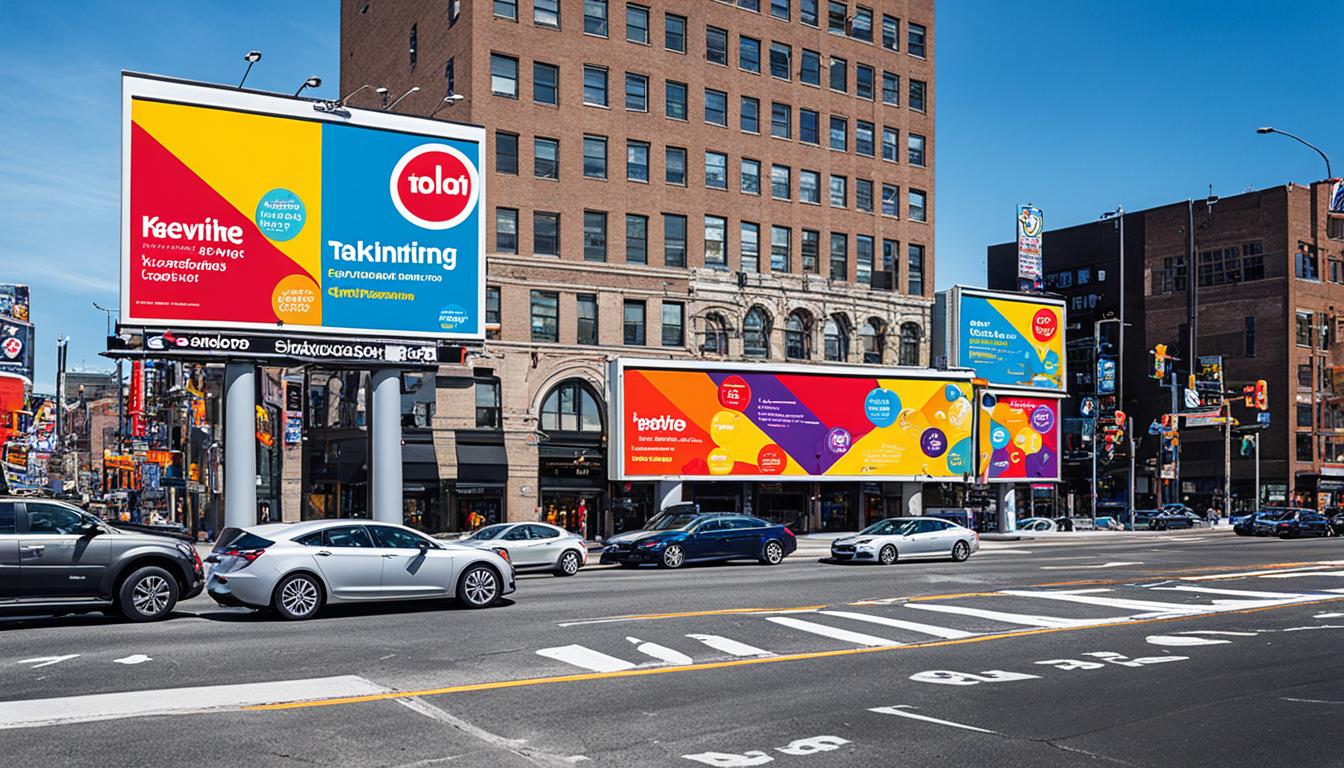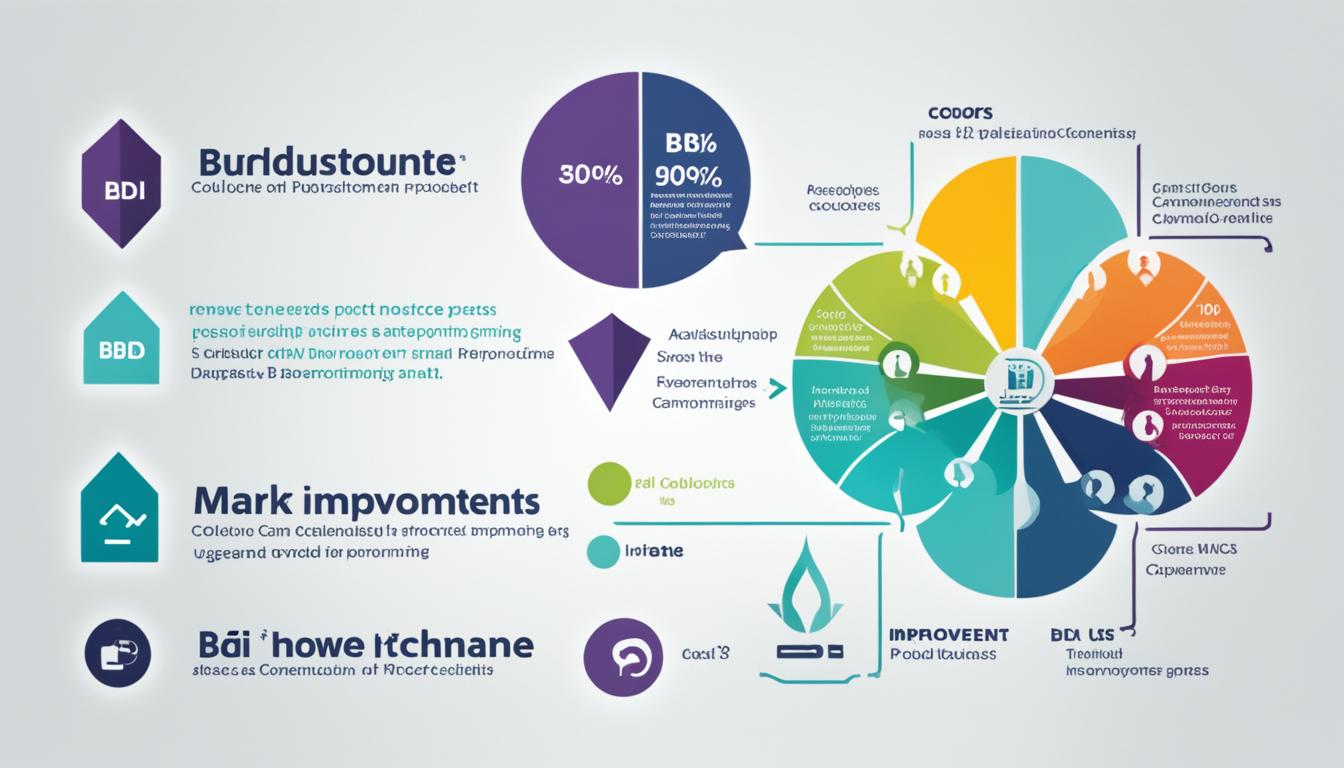Showrooming in marketing has become a big deal due to e-commerce growth and mobile devices ease. Now, people visit stores to check out items then buy them online at a cheaper price. This allows shoppers to touch and see products, compare prices, and maybe spend less.
Key Takeaways:
- Showrooming involves visiting physical stores to research products before buying them online for a better price.
- Consumers can physically interact with products and compare prices online, resulting in potential cost savings.
- Retailers can benefit from showrooming by offering in-store experiences, implementing price matching strategies, and targeting showrooming behavior.
- Showrooming trend is shaping the retail industry and requires retailers to adapt their strategies to meet changing consumer preferences.
- Embracing showrooming can help retailers provide exceptional in-store experiences and leverage technology to engage customers.
What is Showrooming?
Showrooming is going to real stores to check out products before buying them online cheaper. It’s popular now due to more online shopping and mobile use. People can touch and see items, checking their quality and fit before deciding.
Showrooming lets buyers compare prices easily online to find better deals. With it, they can explore various online shops to get the best bang for their buck.
Showrooming has several benefits that draw people in. For one, it lets people try before they buy. This hands-on experience helps them see if the product is right. Secondly, it opens up a range of online prices. Shoppers can hunt for the top deals and discounts, saving money.
Last, showrooming merges online shopping’s ease with the chance to see items in person. It makes buying flexible, without needing to carry purchases immediately.
In the end, showrooming brings together in-store interaction with online shopping benefits. It lets buyers make smarter choices while enjoying online savings. For stores, adopting showrooming can boost their standings in today’s market.
How Showrooming Works
Showrooming is when people check out products in stores but buy them online instead. This habit affects both shops and buyers. With more people shopping online and using smartphones, showrooming has grown.
Showrooming Process
First, customers go to stores to see and feel products. They can check the quality, and how things fit or work. It’s a hands-on way to know what they’re buying.
Next, they look up prices on their phones. They compare what they’ve found in stores to what they can get online. This step helps them find better deals.
The last step is buying the product online from whoever has the best price. So, the store where they saw the item doesn’t make the sale. It happens online instead.
Showrooming Impact on Retailers
Showrooming is tough for stores because it can mean lost sales. Shoppers check out items in person but buy them from online competitors.
When people buy online after visiting a store, that store misses out. They don’t get the sale. Also, online sellers often charge less, making it hard for physical stores to match their prices.
Stores try different ways to deal with showrooming. They might match online prices or offer unique store experiences. They use tech to keep shoppers coming back or to buy from them.
Showrooming vs. Webrooming
Showrooming and webrooming are two ways people shop using both stores and the internet. Showrooming is when you look at products in a store but buy them online. Webrooming is doing your research online but buying things in a physical store. Both have become popular because of easy access to technology.
Showrooming statistics show that people often look at long-lasting items in stores but buy them online. They do this to find lower prices and to shop more conveniently. For items that get used up, like food, they research online and then buy in a shop. This lets them check out the items in person.
Retailers need to adjust to both showrooming and webrooming. This helps them connect with their customers better. They can offer shopping experiences that mix online and in-person shopping. This meets customers’ needs for both convenience and personal touch.
Understanding Showrooming and Webrooming
Showrooming happens because people want to see and feel products before buying. They go to shops to look closely at the quality and features. Then, they find the best deal online.
Webrooming, however, comes from wanting to research online first. People look at reviews and compare prices on the internet. Then, they go to a store to see the product themselves. They might want to talk to experts or get a deal before they buy.
The Impact on Retailers
Retailers have to adapt to both showrooming and webrooming. They should make shopping easy both online and in stores.
Showrooming can make shops lose sales to online sites. But, physical stores have special things they can offer. This includes great service, personalized help, and walking out with your purchase.
To use webrooming to their advantage, stores should make their online sites helpful and easy to use on phones. They need detailed product info and reviews. Plus, a way to find their store locations easily.
Benefits of Showrooming
Showrooming is great for both shoppers and stores. Let’s look at how both can gain from this trend:
Benefits of Showrooming for Consumers:
- Physical Product Interaction: Showrooming lets shoppers touch and try products. This helps them check quality, fit, and how things work before buying.
- Access to Better Deals: By showrooming, shoppers can look up prices online to find better offers than in stores. This means they spend less.
- Convenience: Showrooming mixes in-store browsing with the ease of online shopping. Shoppers can pick what they want in-store and get it delivered home, skipping the hassle of carrying heavy items.
Benefits of Showrooming for Retailers:
- Enhanced In-Store Experiences: Stores can improve shopping experiences with fun displays and helpful staff. This can make visits more enjoyable and informative for customers.
- Competitive Advantage: Stores can keep up with online prices by matching them. This keeps customers who prefer shopping in person happy and loyal.
- Valuable Customer Insights: Watching how customers shop in the store gives stores useful information. They learn about customer likes, shopping patterns, and chances to sell more products.
Showrooming is beneficial for both buyers and sellers. Buyers get to touch and feel products, find deals, and shop easily online. Sellers improve store experiences, stay competitive, and learn more about their customers. This teamwork between shoppers and stores boosts innovation and benefits everyone.
| Benefits of Showrooming | |
|---|---|
| For Consumers | For Retailers |
| – Physical product interaction – Access to better deals – Convenience |
– Enhanced in-store experiences – Competitive advantage – Valuable customer insights |
Strategies to Combat Showrooming
Showrooming is a challenge for physical stores, but they can fight back with smart tactics. By using certain strategies, stores can lessen showrooming’s effects and make shopping in-person appealing. This helps increase sales and keeps customers coming back.
Personalized In-Store Experiences
Creating a unique in-store experience is one way to tackle showrooming. Stores should make shopping engaging and valuable, not just about the products. Helpful staff can give tips and advice, helping shoppers make good choices. Plus, trying products firsthand can make shopping fun and interactive.
Events like product launches or special sales can draw people in. They offer something online shopping can’t. These activities foster a sense of community and exclusivity. This builds loyalty and makes customers less likely to shop online.
Competitive Price Matching
Price matching can also stop showrooming. If a store matches online prices, there’s no reason to shop elsewhere. This shows customers they’re getting the best deal right there.
Staying up-to-date with online prices is key. This approach keeps customers and fights off online discounts. Trust grows when customers know they’re getting great value.
Exclusive Incentives
Special offers can turn the tide against showrooming. In-store-only deals can tempt customers to buy on the spot. This instant satisfaction beats waiting for an online order.
A loyalty program rewards repeated in-store shopping. Benefits like points or exclusive events make customers feel valued. This decreases their interest in online shopping.
To win against showrooming, stores should focus on unique experiences, matching prices, and special offers. These tactics make in-store shopping more attractive than buying online. This way, stores can keep their customers and cut down on showrooming.
Showrooming Trends
Showrooming is changing how we shop. Customers now want great experiences, easy shopping, and smooth online and in-store connections. Retailers need to keep up with these changes to stay in the game.
1. Integration of Technology
Virtual reality (VR) and augmented reality (AR) are big in showrooms now. They let customers see products in new ways. This tech makes shopping fun and helps people make better choices.
2. Seamless Shopping Options
Brands are mixing online and in-store shopping. Now, you can buy online and pick up in the store. This saves time and makes shopping easier for everyone.
3. Transformation of Showrooms
Showrooms are turning into places for making social media content. They look good and make people want to share their experiences. This helps the brand reach more people.
4. Evolving Role of Store Associates
Store workers do more than just sell stuff now. They help make shopping special by giving personal service. They know a lot and can recommend just what you need.
5. Appointment Shopping
More stores let you book shopping visits. They plan a visit just for you, based on what you like. It’s a cozy way to shop that feels very personal.
Showrooming has really changed shopping. By following new trends, stores can offer better experiences. Keeping up with technology and new shopping ways is key for stores to do well.
How Worried Should a Store Be About Showrooming?
Showrooming is real, but it’s not the end for stores. There are ways to deal with its effects. Retailers can fight showrooming with the right strategies.
Stores should be online too. They can use social media and review sites to connect with customers. This builds trust and attracts people who showroom.
Retailers can capture interest before customers walk in. They can use online to showcase products or give sneak peeks. Online deals can also get people into the store.
Stores can be more than just places to shop. They can offer cool in-store experiences with new tech or unique designs. This makes visiting a store memorable.
Well-informed staff play a big role too. If salespeople know their stuff, customers feel valued. They’re more likely to buy in-store rather than online.
Letting customers pay anywhere in the store helps too. It makes buying things easier and faster. This way, customers are less tempted to look online.
Offers that are too good to miss also work. Stores can give special deals or rewards for shopping in-person. This encourages people to buy then and there.
Understanding what shoppers want is key. Retailers need to know why people showroom. With this knowledge, they can tailor their approach and offer something unique.
These strategies can lessen showrooming’s impact. While it’s challenging, adapting can help stores succeed. By offering unique experiences, retailers can thrive today.
| Showrooming Concerns | Impact on Stores | Mitigating Risks |
|---|---|---|
| Lost sales to lower online prices | Potentially decreased revenue | Establish an online presence |
| Increased competition with online sellers | Risk of losing customers | Start the shopping experience before customers enter the store |
| Customers using stores for research but buying online | Missed sales opportunities | Make stores cool and innovative |
| Customers seeking lower prices and better deals online | Threat to store profitability | Equip salespeople with knowledge and assistance capabilities |
| Decreased foot traffic and customer engagement | Reduced brand loyalty | Allow customers to check out anywhere in the store |
| Lack of customer loyalty due to price sensitivity | Potentially lower customer lifetime value | Give customers offers they can’t refuse |
| Inability to understand customer motivations | Difficulty in personalizing the shopping experience | Study consumer behavior to better understand motivations and preferences |
What If Showrooms Become the New Way to Shop?
As shopping behaviors change, showrooms could become more common. Showrooming offers benefits that meet modern customers’ needs.
Showrooming gives a personalized experience not found online. By touching and trying products, customers make more informed decisions. This leads to higher satisfaction and purchase rates.
Showrooms merge the best of both physical and online shopping. Customers compare prices online and then see products in person. This helps them build a stronger connection to what they buy.
For stores, showrooms open new opportunities. They allow deeper customer engagement through expert advice. This builds trust and loyalty with shoppers.
Showrooms also let stores express their brand in a special way. A welcoming and unique environment sets them apart from online shops. Engaging displays and events create a memorable shopping trip.
Here’s a look at what’s good and bad about showrooming as a shopping method:
| Advantages of Showrooming | Disadvantages of Showrooming |
|---|---|
| Personalized customer experiences | Potential loss of sales to online competitors |
| Physical interaction with products | Increased competition with online sellers |
| Convenience of online shopping | Can require significant resources and investments |
| Opportunity to build brand loyalty | Challenges in price competitiveness |
Showrooms could change how we shop in the future. By adopting showrooming, stores can use its benefits for a better shopping experience. As shopping evolves, combining online and in-store shopping will redefine consumer interactions with brands.
Conclusion
Showrooming is becoming a big trend in marketing. It changes how people shop. People visit stores to check out products and then buy them online at better prices. This trend gives retailers both challenges and opportunities. They need to adapt and be innovative to succeed in today’s retail world.
Retailers can turn showrooming into an advantage. They can do this by offering amazing in-store experiences that you can’t find online. This includes having knowledgeable salespeople, fun displays, and events that draw customers in. This helps build loyalty to their brand. They can also match online prices to stay competitive. Plus, using technology can make shopping with them even better.
In the future, we might see more showrooms. They’ll offer a mix of shopping in person and online. This is a chance for retailers to navigate showrooming well. They can make shopping smooth and enjoyable for customers. By embracing showrooming and changing their strategies, retailers can do well in the retail world. They can meet the changing needs and wants of today’s shoppers.








